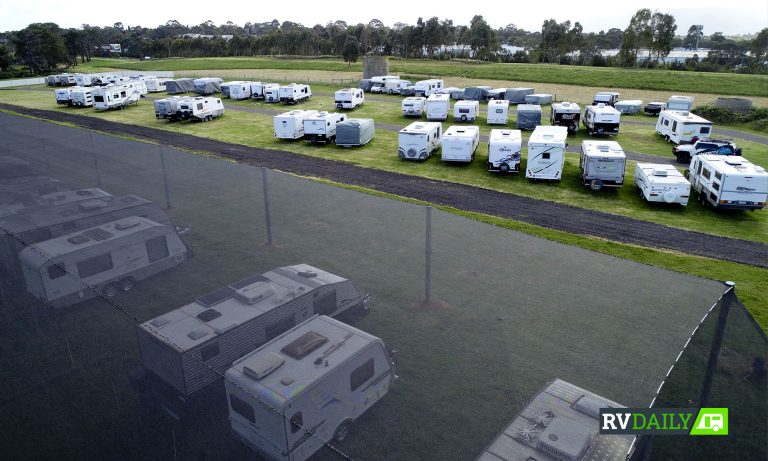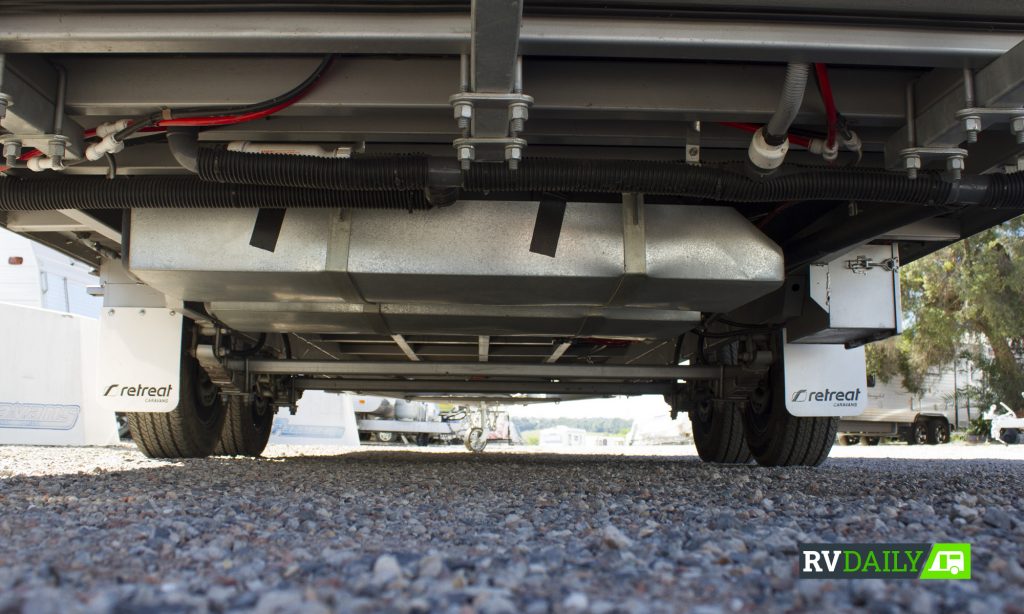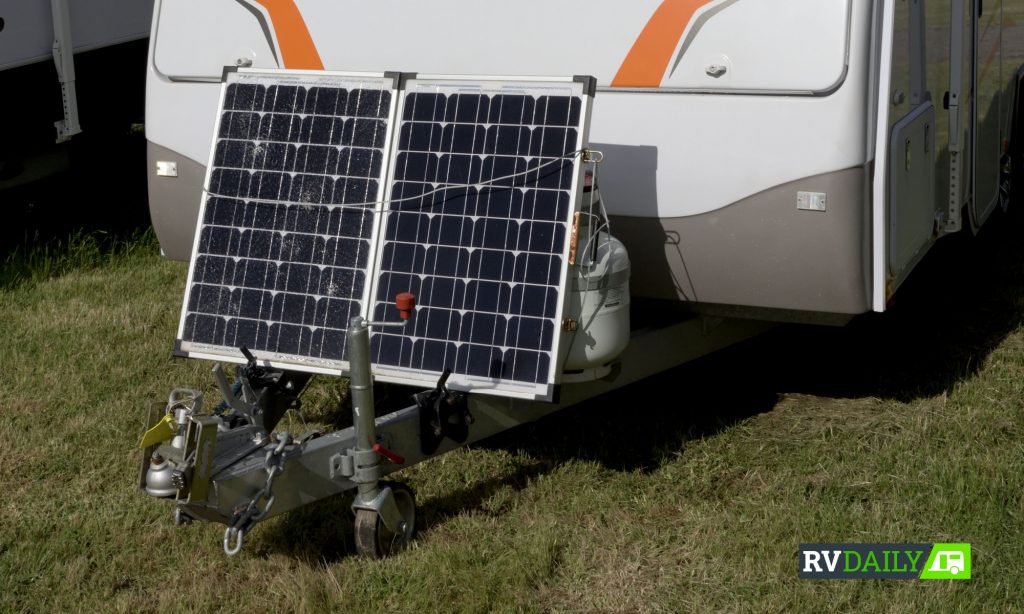How to prepare your RV for storage
In light of the stay at home message due to COVID-19, it’s time to stop travelling for a bit. Here’s how to prepare your RV for storage Whether you spend $5000 on a camper or $110K on a caravan, it’s…


In light of the stay at home message due to COVID-19, it’s time to stop travelling for a bit. Here’s how to prepare your RV for storage Whether you spend $5000 on a camper or $110K on a caravan, it’s…


Whether you spend $5000 on a camper or $110K on a caravan, it’s still an investment worth looking after. Best practice is to maintain the van in tip-top condition all year round so that it takes very little time to get it road-ready.
To achieve this ideal requires some serious thought and a plan. A checklist that kicks into place after a trip is a great idea to ensure nothing is forgotten. Download your checklist here
THE OUTSIDE
Spend a few hours and clean the van from top to bottom and underneath, and dry thoroughly. A good polish or wax will prepare the exterior surface and make it easier to wash off the dust prior to heading away again. While currently the situation for having your RV serviced varies from state to state under differing stages of lockdown, but if you can, book the van in for a complete mechanical check with a registered and approved repairer. If you’re handy and careful with safety items like brakes, then now is definitely the DIY window, but don’t attempt what you know you should leave to a pro. The last thing you need is to come out of a layoff period and straight into an accident. In relation to the COVID-19 outbreak then some dealers and service agents are offering a pick-up and drop-off service for their customers. Take advantage if you can.
The mechanic can also grease the underneath of the van for you, which will spare you from completing this essential task. A recommendation from Andrew Phillips from the RV Repair Centre was to deal with any rust found around the A-frame or bumpers to prevent this eating away at your investment while stored. Shut down the gas system and burn off any gas in the lines. This should be off during travel anyway, but we all know of people who flout that rule.
THE INSIDE
While the biggest clean job is the exterior, the interior should also be cleaned from top to bottom and be totally dry before going into storage. There are two options with bedding. One is to leave bedding out of the van until it’s needed. The other is to clean and replace bedding so it’s ready to go on short notice. Either works and if you place a moisture absorber tub in the van, it will reduce the chance of mould and keep the bedding fresh.
Defrost and clean the fridge and freezer and leave the fridge doors open. Some vanilla essence in a lid or small jar will keep the fridge smelling sweet and bi-carb soda will help draw away any moisture and also absorb smells.
Close all windows and blinds. This prevents UV damage if stored in the sun and also stops critters from nesting in the window frames.
THE WATER SYSTEMS
Water tanks should be drained if the van is being left for six months or more. Leave the drain open and use a gauze filter to prevent bugs nesting inside. If the van might be used within a six-month period (let’s hope so), keep the tanks full but flush before use if the water tastes or smells funny.
While many people head away for winter, if a van is stored where it could freeze then it’s recommended the water is drained from the hot water service. If this is not done, check the anode pre- and post-travel, including draining the tank and replacing any stale water in the system.
Cassette toilets require a thorough clean once emptied. Once clean enough to eat your dinner off [whatever floats your boat – Ed.], pop a little water and toilet chemical in the bottom to keep it fresh and ready for storage. Grey and black tanks need to be emptied and flushed thoroughly to avoid nasty smells and germs. Washing machines should be clean and dry, including the lint filters, before storing. We’d also recommend leaving the lid open. Handy hint: If you want to avoid chemicals, a solution of vinegar and water will clean black and grey water tanks.

Make sure everything electrical is working properly including lights and major appliances and repair anything that needs it. Switch the van off at the main power switch to ensure all power is shut down.
Today’s modern electrical systems are pretty clever, which makes storing a van easier, although keeping the batteries charged will depend on where the van is stored and what’s available to charge them. Disconnecting batteries either mechanically or physically is the safest solution although the battery will still discharge slowly over time. If the van is stored at a site where there is no way to charge the battery, it’s best to remove and take them home where the charge can be maintained correctly.
If solar or 240V power is available, use an appropriate charger to maintain the batteries. Most appliances run clocks and other things where if a light’s on there is a power drain. The right charger will allow the battery to drain slightly and then recharge for maximum life. Using products such as an Ampfibian is a safe way to manage 240 volts into a van during storage as well as travel. Make sure there’s at least a surge protector or some form of protection in-line especially if you’re relying on a power source that’s not yours.
Chris McClellan, Director of Enerdrive, explained that lithium technology is expanding but the same rules apply with regard to keeping batteries charged correctly. The big difference with lithium is that if you murder the battery by allowing it to go flat, it’s going to cost a lot more to replace so a 240V or solar system set up correctly is a good way to go. Remember, a van stored in a garage or undercover may get light on a solar panel but if it’s not direct sunlight it may take more power to operate the system than it’s receiving, which will still lead to a flat battery.

STORAGE SOLUTIONS
There are many options for storing vans. The best one is undercover in a garage or shed where it’s not in direct sunlight and there’s power to keep things charged. The next best is under a carport where extra protection may be required to ensure the van stays in top shape. The last and least desirable is out in the open.
In the past, people would jack up a van and rest it on chocks to avoid flat spots on tyres which made life hard if you wanted to get away in a hurry. These days the recommendation is to park the van on a flat surface and pump the tyres up to the max tyre pressure to avoid flat spots. Don’t forget to drop the tyre pressures down before heading out again. Tyres should be covered to prevent UV damage. A board or heavy waterproof sheet can be used for this.
Use a good rust proofer or lubricant on stabilising legs and anything that might rust shut. Ant Sand around the wheels, stabilising feet and jockey wheel will prevent ants and other bugs crawling inside. This needs to be checked regularly to maintain protection and don’t forget rodents, they can do considerable damage.
Caravan covers are a popular storage accessory, but they need to be secured properly to avoid them flapping around and causing damage to the caravan body. If a cover isn’t used then a bucket can protect the hitch and wiring plugs from the weather. The gas bottles and regulator also need to be covered with a secured tarp.
Depending on the storage space some people will leave the handbrake off to avoid the brake shoes and magnets rusting, especially if the van has just been washed. If this is the case chock the wheels to prevent the van from wandering but leaving the handbrake on is preferable. In fact, chock the wheels for good measure.
Gas or diesel heaters will have a vent to the exterior of the van. Ensure these covers are closed and sealed properly. If there is a van-mounted generator then cover the exhaust with a bag or similar to prevent wasps and bugs getting in.
INSURANCE
The best place to start is with your current policy, and then your insurer. Are all your details up to date? As we’ve mentioned elsewhere there are some insurers that offer laid-up cover, where you can elect to lower your premium via parking your van at a nominated address. You can’t go travelling under such conditions though, without contacting your insurer. Otherwise, re-read your policy and ensure the right coverage is in place. As with any kind of storage, from outside your house to a registered storage facility, the more secure you make your van the better. Measures can include wheel clamps, hitch locks, and an alarm system and Bluetooth/WiFi cameras may help lower the insurance premium.
NOTE: Fire Safety
Not that anyone wants to revisit another recent crisis! But do you (still) have a fire plan for your van or camper? Living in a bushfire-prone area requires some thought as to how a van or camper is stored and can be evacuated if there’s sufficient time. If you want to take your van off-site with you in the event of a fire, make sure the details are included in your fire plan. This will make getting hooked-up under stressful conditions easier.
For more information, please visit the RV Repair Centre (Vic) here and Store My Van here